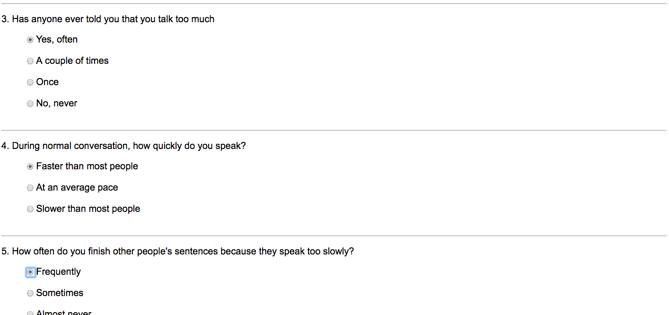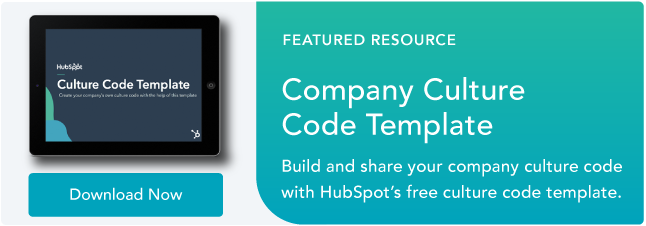
We begin with a cast of two characters. One is organized, ambitious, competitive, and sometimes a little impatient. The other is laid-back, collaborative, creative and, sometimes, a little messy.
Do you identify with one more than the other?
Many of us already identify as either a "Type A" or "Type B" personality. Or, maybe you see yourself as a hybrid of both -- like those of us who schedule our time and manage to-do lists like maniacs, but can't recall the last time we made our beds. 
Here's how the two types tend to break down, according to the American Psychological Association:
- Type A: "A complex pattern of behaviors and emotions that includes excessive emphasis on competition, aggression, impatience, and hostility."
- Type B: "As compared to Type A behavior pattern, a less competitive, less aggressive, less hostile pattern of behavior and emotion."
But if you're anything like me, you might be thinking, "Well, that seems a bit restrictive." That's why we're going to dive a bit deeper into each one. But first -- let's have a little fun.
Type A vs. Type B Personalities
Before we get into the nitty-gritty of these personality types, check out this infographic to see if there's one with which you identify more than the other:

While the options above might be generally easy to associate with either Type A vs. Type B workplace personalities, you may have found yourself identifying with a little bit of both. And that's normal -- it's hard to check off all the boxes for one category.
It's a visual, very informal representation of the A/B personality test -- take it with a grain of salt, since it doesn't even begin to scratch the surface of the original version of this assessment. That began in the 1960s, when researchers David C. Jenkins, Stephen Zyzanski, and Ray Rosenmen sought a way to measure the correlation between certain behaviors and coronary heart disease.
That study lead to the development of the Jenkins Activity Survey (JAS): a multiple-choice questionnaire that was distributed for use among psychology professionals in 1979. Today, many A/B personality tests are adaptations of the JAS, like this one -- designed primarily for university students -- available through UNC Charlotte's Department of Psychology.
 Source: UNC Department of Psychology
Source: UNC Department of Psychology
Today, it's hardly the only personality inventory of its kind, and almost seems a bit antiquated. In the last few decades, we've seen more complex assessments emerge, like the Myers-Briggs Type Indicator® (MBTI®), DiSC, and Thomas-Kilmann Conflict Mode Instrument (TKI®). Sure, we might still make general references to it -- for example, I've lost count of the number of times each day I declare how Type A I am -- it seems like the classic A/B dichotomy isn't sufficient enough to comprehensively measure someone's personality anymore.
It poses the question: Is there still room for the old fashioned Type A vs. Type B labels in the workplace? Or are they, as a reliable measure of personality, defunct? And in the end, do all of these elaborate assessments and profiles really just lead to Types A and B?
Does the A/B Personality Construct Have a Place in the Office?
The fact that many people identify with characteristics ascribed to both Type A and Type B -- depending on the context -- is why these more elaborate personality inventories were created. For example, DiSC is a test that assesses someone's personality based on four behavioral drivers:
- Dominance
- Influence
- Conscientiousness
- Steadiness
Someone who scores high in steadiness, for example, tends to be friendly, empathetic, and places a lot of importance on being well liked and avoiding risk. That might sound a bit like Type B, right?
Someone who scores high in influence, on the other hand, tends to be outgoing, spontaneous, enthusiastic, unfocused, and optimistic. But wait -- those also sounds like Type B traits.
But despite both steadiness and influence erring more toward the Type B side, each sounds like it has a pretty distinct character, working style, and approach to collaboration. See? As we said -- that's why these more detailed personality profiles exist.
Now, let's take a look at someone who scores high in conscientiousness. This person tends to:
- Be a data-driven problem solver.
- Work deliberately and at a conservative pace.
- Want to be correct and accurate.
- Communicate in a more non-verbal manner.
So which bucket does this person fall into: Type A, or Type B?
The value that this person places on accuracy might scream, "Type A!" But the conservative pace might lean a bit more toward Type B. It's more difficult to place this one into a single category -- again, that's where a more detailed personality inventory becomes particularly useful.
How Much Does "A" or "B" Really Matter?
When we're able to categorize things, it gives us the impression that we can better understand our surroundings. It's human nature -- the A/B personality constructs, like many other identifying "buckets," likely exist because of our instinctive compulsion and desire to identify the unknown.
But much of the time, these categories leave out important details. After all, if you don't fit neatly into one bucket, what are you supposed to do?
Good news -- that doesn't really matter.
What does matter, however, is how you operate in and respond to day-to-day workplace scenarios. Which systems help you stay organized? How many unread emails do you feel comfortable having in your inbox? How far in advance do you care to plan out your lunch?
Answering those questions can help you identify and align your priorities, and ultimately determine which factors are going to help you be most successful and productive at work.
So While There's No Need to Be "A" Or "B" ...
... it might be helpful to look into some of the newer, more detailed personality inventories. Many of them, like the DiSC, are designed to help you gain more honest insight into the questions above -- the ones that help you shed light on how you approach deadlines and collaborate, for example. Having that information can help you better prepare for team projects and high-pressure scenarios, and self-identity detrimental behaviors of which you might not have been previously aware.
So, while there's no need to pressure yourself to uphold one personality type or the other -- whether it's Type A or Type B, introvert or extrovert, ENTJ or ENJF -- it's important to know what's going to help you do your best work.
Do you think understanding formal personality types are important at work? Let us know in the comments.
This post was originally published in July 2015 and has been updated for accuracy and comprehensiveness.

from HubSpot Marketing Blog https://blog.hubspot.com/marketing/a-b-personality-types

No comments:
Post a Comment